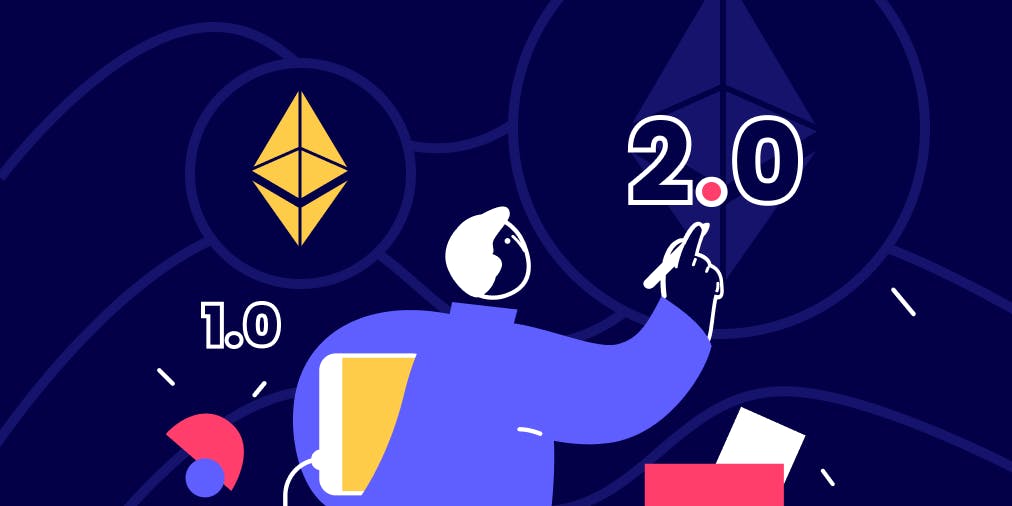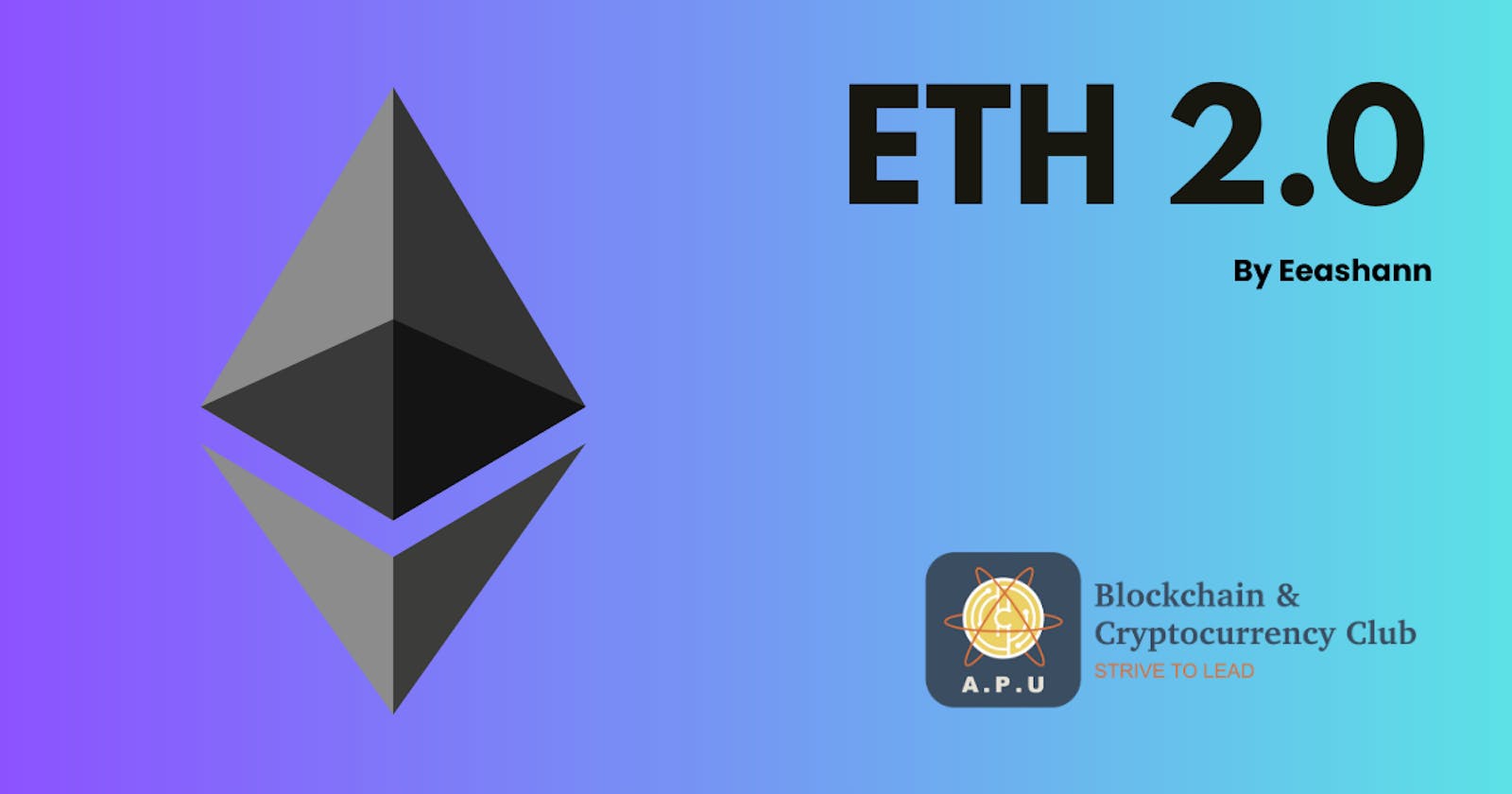Ethereum 2.0: The Upgrade We Didn't Know We Needed (But Now Can't Live Without)
A Comprehensive Guide to Beginner
What is Ethereum first of all?
Ethereum is a blockchain-based platform that enables developers to create decentralized applications (dApps) and smart contracts. It was launched in 2015 and has become one of the most popular blockchain platforms for building decentralized applications. However, the current version of Ethereum (Ethereum 1.0) has some limitations that need to be addressed to make the platform more scalable, secure, and sustainable. Ethereum 2.0 is the next version of the Ethereum platform that aims to address these limitations.

What are the limitations currently faced by Ethereum 1.0 and how Ethereum 2.0 addresses them?
One of the main limitations of Ethereum 1.0 is its scalability. Currently, the platform can only process around 15 transactions per second (TPS), which is not enough to support the increasing demand for decentralized applications. Ethereum 2.0 aims to address this limitation by introducing a new consensus mechanism called Proof of Stake (PoS). In PoS, validators stake their Ether (the native cryptocurrency of Ethereum) to secure the network and validate transactions. This is in contrast to the current consensus mechanism in Ethereum 1.0, which is Proof of Work (PoW), where miners use computational power to validate transactions. PoS is more energy-efficient and can process more transactions per second compared to PoW.
Another limitation of Ethereum 1.0 is its security. The platform has been subject to several attacks and security vulnerabilities in the past. Ethereum 2.0 aims to address this limitation by introducing a new architecture that separates the execution layer (where smart contracts are executed) from the consensus layer (where validators validate transactions). This separation makes the platform more secure by reducing the attack surface and enabling better fault tolerance.
Ethereum 2.0 also aims to improve the sustainability of the platform. Currently, Ethereum 1.0 requires a lot of computational power and energy to validate transactions, which is not sustainable in the long run. Ethereum 2.0 aims to address this by introducing sharding, which is a technique that partitions the network into smaller groups of validators (called shards) that can process transactions in parallel. This reduces the amount of computational power and energy required to validate transactions, making the platform more sustainable.
Some myths about Ethereum 2.0
There are a few myths about Ethereum 2.0 that are circulating in the crypto community. Let's take look into some of them.
Ethereum 2.0 will replace Ethereum 1.0 immediately
- This is not true. Ethereum 2.0 will be rolled out in phases, and the current version of Ethereum (Ethereum 1.0) will continue to exist alongside Ethereum 2.0 for some time. The transition to Ethereum 2.0 is expected to take several years.
Ethereum 2.0 will solve all of Ethereum's problems
- While Ethereum 2.0 is expected to bring significant improvements to the Ethereum network, it is not a silver bullet that will solve all of Ethereum's problems overnight. There will still be challenges and issues to address, and further upgrades and improvements will likely be needed.
Ethereum 2.0 is just a technical upgrade
- While Ethereum 2.0 is primarily a technical upgrade, it will also bring significant changes to the economics and governance of the Ethereum network. For example, the switch to a Proof of Stake (PoS) consensus mechanism will have implications for the distribution of rewards and the way decisions are made on the network.
Ethereum 2.0 is a completely separate blockchain
- This is not true. Ethereum 2.0 is an upgrade to the existing Ethereum blockchain, not a separate blockchain. The two versions of Ethereum will be connected by a bridge, which will allow assets and data to be transferred between the two chains.
It's important to separate fact from fiction when it comes to Ethereum 2.0, as understanding the true nature of the upgrade will help stakeholders make informed decisions about how to engage with the Ethereum ecosystem.
Conclusion
In summary, Ethereum 2.0 is a continuation of the Ethereum development roadmap and represents an important milestone in the evolution of the platform. It builds on the legacy of Ethereum 1.0 by introducing new features and improvements that will make it an even more powerful and scalable platform for building decentralized applications and smart contracts. Despite these upgrades, Ethereum remains Ethereum, and both Ethereum 1.0 and Ethereum 2.0 will continue to play a critical role in the development of the decentralized web.
